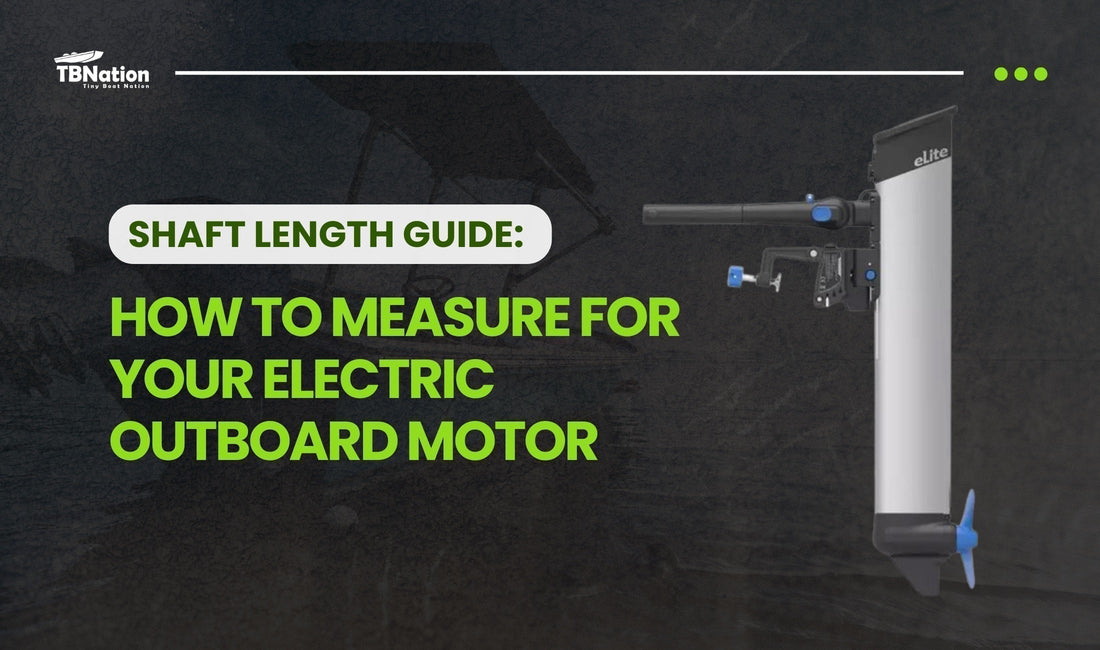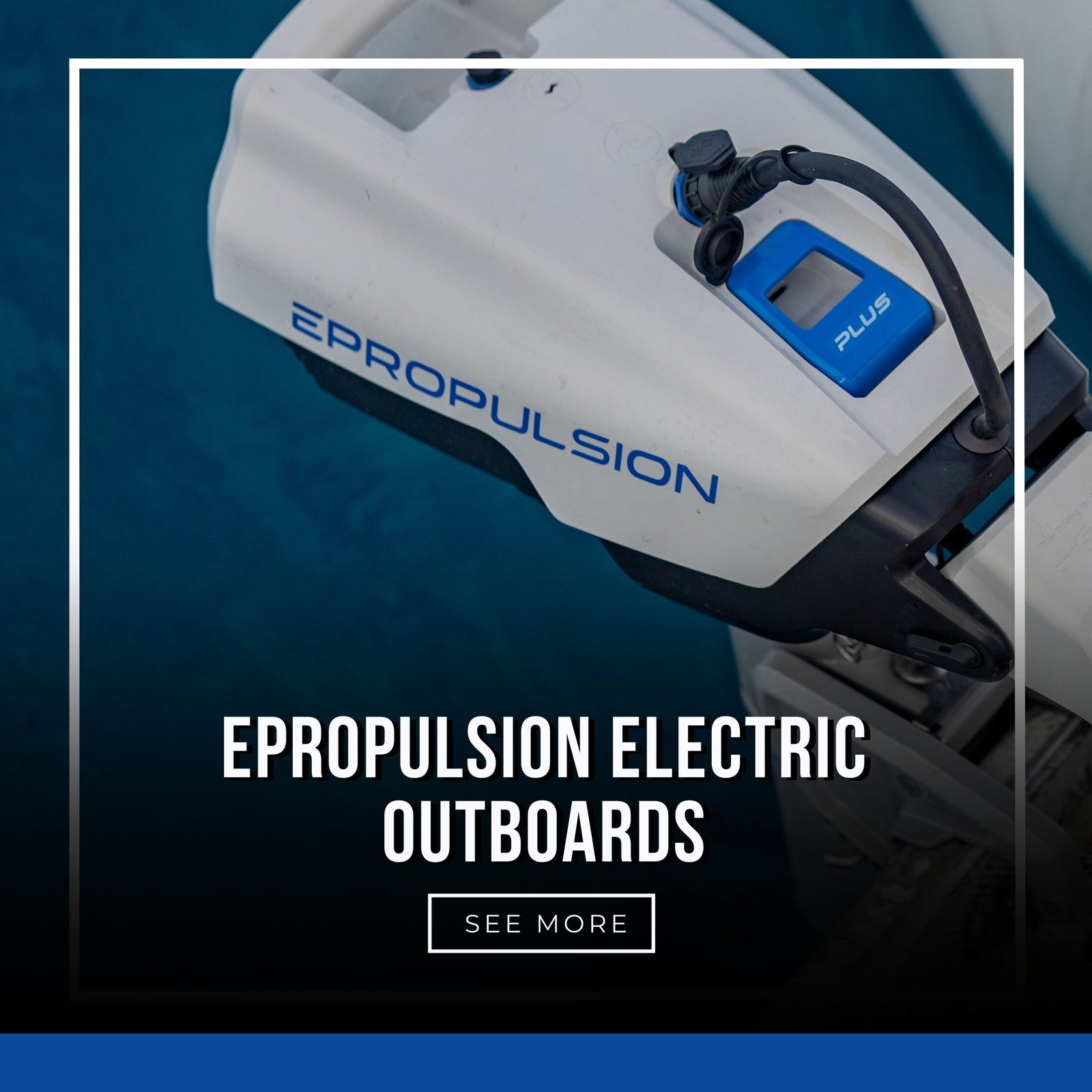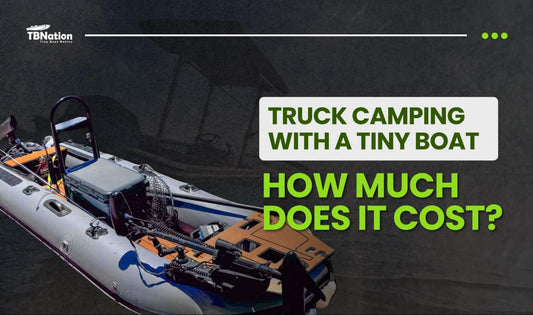Your Cart is Empty

Shaft Length Guide: How to Measure for Your Electric Outboard Motor
Key Takeaways
- Shaft length determines how deep the propeller sits in the water, affecting thrust, handling, and overall efficiency of your electric outboard motor.
- Accurate measurement is essential; learning how to measure driver shaft length ensures you select the correct shaft for your boat.
- Most outboard motors come in standard driver shaft lengths: short (15 in), long (20 in), and extra long (25 in), suitable for different boat sizes and transom heights.
- Selecting the right shaft length improves performance, prevents cavitation, and extends the lifespan of your electric outboard motor.
- Adjustable shafts and proper consideration of boat type, load, and water conditions help maintain optimal performance and safety.
Choosing the right shaft length for your electric outboard motor is crucial for optimal performance, safety, and efficiency. Using an outboard motor with the wrong length can cause poor handling, reduced speed, cavitation, and even damage to your boat. This guide will explain how to measure driver shaft length, review standard shaft length options, and provide practical tips for selecting the right electric outboard motor shaft.
Understanding the correct shaft length not only improves thrust and maneuverability but also extends the lifespan of your motor. By taking accurate measurements and considering factors like boat type, load, and water conditions, you can ensure your electric outboard motor operates efficiently and safely every time you head out on the water.
Understanding Shaft Length
What Is Shaft Length?
Shaft length is the vertical distance from the top of your motor’s mounting bracket to the center of the propeller. This measurement determines how deep the propeller sits in the water. A shaft that is too short can cause the propeller to break the water surface during operation, leading to cavitation and reduced thrust. A shaft that is too long may create unnecessary drag, affecting speed and fuel efficiency.
Why Shaft Length Matters for Electric Outboard Motors
The correct shaft length ensures your electric outboard motor performs efficiently. Proper submersion of the propeller improves control, increases thrust, and reduces wear on the motor. This is especially important in rough waters, where maintaining consistent contact with the water surface ensures safe and smooth navigation. Choosing the right outboard motor shaft length also extends the motor’s lifespan and prevents costly maintenance.
How to Measure Driver Shaft Length
Accurately measuring your boat’s transom is essential for selecting the correct shaft length for your electric outboard motor. Following the right steps ensures optimal propeller submersion and smooth performance.
Gather Your Tools
Start by preparing a flexible tape measure in inches and centimeters, which allows you to take precise measurements. Keep a pen and paper handy to record your numbers as you go. For larger boats, having a helper can make the process easier and more accurate.
Measure Your Transom Height
Identify the top of the transom where your motor will be mounted. Measure straight down to the bottom of the hull or keel, keeping the tape perpendicular to the waterline. This ensures that your measurement reflects the true height of the transom.
Match Your Shaft Length
Once you have your transom height, compare it to the standard driver shaft lengths. A 15-inch measurement corresponds to a short shaft, 20 inches to a long shaft, and 25 inches to an extra long shaft. For example, a 20-inch transom would require a long shaft outboard motor for optimal performance.
Double-Check Measurements
It’s always wise to measure twice to avoid errors. Incorrect shaft length selection can lead to performance issues or unsafe operation. Double-checking ensures your electric outboard motor will function efficiently and safely.
Standard Driver Shaft Lengths

Most electric outboard motors come in three main standard driver shaft length options. Understanding these categories helps you choose the right motor for your boat.
Short Shaft (15 inches / 38 cm)
- Suitable for small boats with shallow transoms
- Provides adequate propeller submersion without excess drag
- Ideal for dinghies, small inflatables, or lightweight jon boats
Long Shaft (20 inches / 51 cm)
- Designed for medium-sized boats with standard transom heights
- Maintains propeller submersion even in moderate waves
- Commonly used for aluminum fishing boats, small pontoons, or sailboats
Extra Long Shaft (25 inches / 64 cm)
- Best for larger boats or boats with deep transoms
- Keeps the propeller submerged in rough water or with heavy loads
- Recommended for cabin cruisers, larger fishing boats, or boats with deep hulls
Always verify the shaft length specifications with the manufacturer, as small differences may affect motor performance.
How to Choose the Right Shaft Length for Your Electric Outboard Motor
Consider Your Boat Type and Size
Larger boats or boats with deep transoms generally need longer shafts. Smaller boats or lightweight inflatables usually work best with short shafts.
Factor in Water Conditions
If you often navigate rough or choppy waters, a longer shaft ensures the propeller remains submerged, maintaining thrust and preventing motor cavitation.
Match Motor Power and Propeller Type
Your electric outboard motor should have sufficient power for your boat size. A high-powered motor with a short shaft may underperform, while a small motor with an excessively long shaft can create drag.
Look for Adjustable Shaft Options
Some modern electric outboard motors allow adjustable shaft lengths. These versatile motors let you fine-tune propeller depth for different boats or water conditions, improving overall performance.
Common Mistakes to Avoid
Using the Wrong Shaft Length
A shaft that is too short causes cavitation, while a shaft that is too long reduces speed and efficiency. Both scenarios can negatively impact your boating experience.
Ignoring Boat Load
Heavily loaded boats sit lower in the water. A slightly longer shaft may be necessary to maintain proper propeller submersion.
Overlooking Manufacturer Recommendations
Always consult the motor manufacturer’s specifications. They provide recommended shaft lengths for optimal performance based on your boat’s type, weight, and use.
Tips for Optimal Shaft Length
- Measure twice to ensure accuracy.
- Factor in waterline changes due to passengers, cargo, or fuel.
- Test adjustable shafts if possible to see which length works best.
-
Consult marine experts or dealers for advice on unique hull shapes.
Conclusion
Selecting the correct shaft length for your electric outboard motor is key to achieving smooth performance, safety, and longevity. Accurately measuring your transom, understanding standard driver shaft lengths, and considering your boat’s size, load, and water conditions ensures the right motor choice.
Proper shaft length selection improves thrust, handling, and overall boating efficiency while reducing wear on your outboard motor.
By following these guidelines and consulting manufacturer recommendations, you can confidently choose the best electric outboard motor shaft length for your boat, ensuring safe, efficient, and enjoyable boating experiences.
Get the Right Shaft for Your Boat
Now that you know how to measure shaft length, make sure your motor matches your boat perfectly. The right electric outboard motor—short, long, or extra-long shaft delivers smooth performance and efficiency on the water. Don’t settle for less! Choose the perfect fit and hit the water with confidence.
------------------------------------------------------
Frequently Asked Questions
1. What is shaft length on an electric outboard motor?
It’s the distance from the motor’s mounting bracket to the propeller, affecting performance and efficiency.
2. How do I measure driver shaft length?
Measure from the top of the transom to the bottom of the hull and compare with standard shaft lengths.
3. What are the standard driver shaft lengths for outboard motors?
Short (15 in), long (20 in), and extra long (25 in).
4. Why is selecting the correct shaft length important?
It ensures proper propeller submersion, improving thrust, handling, and motor lifespan.
5. Can I adjust the shaft length on my outboard motor?
Some electric outboard motors have adjustable shafts for different loads and water conditions.
Join Our VIP List
Join the Tiny Boat Nation VIP Members List.
It's Free! Stay Up To Date With Announcements, Product Give Aways, News and Promotions.










